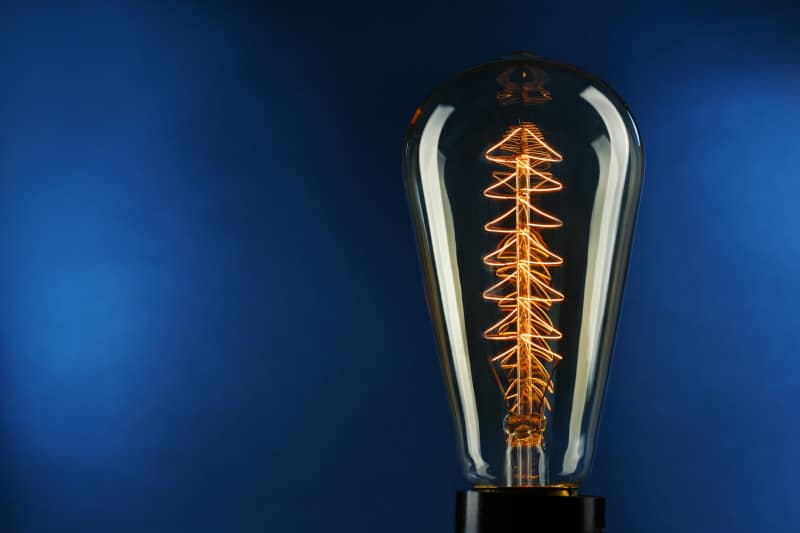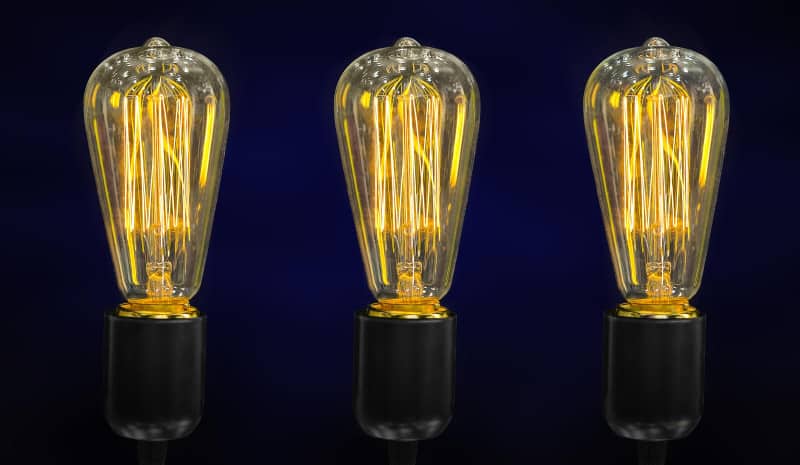Are you tired of paying high electricity bills and constantly replacing light bulbs?
Energy-saving bulbs might be the solution you’re looking for.
With a wide variety of wattage options available, it can be overwhelming to choose the right one for your needs.
That’s why we’ve put together a comprehensive wattage comparison of energy-saving bulbs to help you make an informed decision.
We’ll delve into the technical aspects of energy-saving bulbs and compare their wattage to traditional incandescent lights.
We’ll also explore the relationship between lumens and wattage and how it affects the brightness of your bulbs.
Understanding Energy-Saving Bulbs
Get ready to see the lightbulb of understanding turn on as we delve into the illuminating world of energy-saving bulbs and compare their wattage!
Energy-saving bulbs have become increasingly popular due to their numerous benefits, including their ability to save energy and money.
There are several types of energy-saving bulbs available, including LED, CFL, and halogen bulbs, each with unique features and benefits.
LED bulbs are known for being the most energy-efficient type of bulb, using up to 80% less energy than traditional incandescent bulbs.
CFL bulbs, on the other hand, are a more affordable option and can emit a brighter light.
Halogen bulbs are a type of incandescent bulb that is more energy-efficient, with some models using up to 30% less energy than traditional incandescent bulbs.
Installing energy-saving bulbs is a simple process that can be done by anyone, and maintenance is relatively low, with most bulbs lasting up to 25,000 hours.
With so many benefits and options available, energy-saving bulbs are a smart choice for anyone looking to save money and reduce their energy usage.
Choosing the Right Wattage
Brightness requirements:
The first factor to consider when choosing the right wattage for energy-saving bulbs is the desired level of brightness.
Different lighting situations may require varying levels of illumination.
A well-lit workspace, for instance, might necessitate a higher wattage to ensure ample brightness, while a cozy reading nook may require a lower wattage for a softer, ambient glow.
Room size and purpose:
The size and purpose of the room play a significant role in determining the wattage of energy-saving bulbs.
Larger spaces generally require higher wattages to adequately light the area. For instance, a living room or a conference room may benefit from a higher wattage bulb to provide ample illumination.
On the other hand, smaller spaces, such as bathrooms or hallways, may be adequately lit with lower wattage options.
Energy efficiency considerations:
One of the primary motivations for choosing energy-saving bulbs is to reduce energy consumption and lower electricity bills.
Energy-saving bulbs, such as LED or CFL (compact fluorescent) bulbs, use considerably less power compared to traditional incandescent bulbs.
When selecting the wattage, it is essential to strike a balance between energy efficiency and adequate lighting.
Opting for the lowest wattage that meets your brightness requirements can help maximize energy savings.
Dimmable options:
If you prefer to have control over the brightness levels in a room, consider selecting energy-saving bulbs that are dimmable.
Dimmable bulbs allow you to adjust the brightness according to your needs, offering flexibility and creating the desired ambiance.
However, it is crucial to ensure compatibility between the bulb, the dimmer switch, and any additional components to achieve optimal performance.
Lighting fixture compatibility:
While choosing the right wattage, it is important to consider the compatibility of energy-saving bulbs with your lighting fixtures.
Some fixtures may have wattage limitations or specific recommendations to ensure safe and proper functioning.
It is advisable to check the manufacturer’s guidelines or consult a professional if you are unsure about the compatibility of energy-saving bulbs with your existing fixtures.
Decoding the Lumen-Watt Relationship
Understanding the relationship between lumens and watts can reveal the true brightness of energy-efficient bulbs, allowing for more informed decisions when selecting lighting options for your home or business.
Lumens are a measurement of brightness, while wattage measures the amount of energy consumed by a bulb. In traditional incandescent bulbs, higher wattage meant brighter light, but with energy-saving bulbs, wattage efficiency has improved, leading to a higher lumen output with lower wattage consumption.
Energy conservation is a crucial factor when it comes to lighting options, and understanding the lumen-watt relationship can help maximize energy savings.
For example, a traditional 60-watt incandescent bulb produces around 800 lumens, while a 12-watt LED bulb can produce the same amount of brightness.
By selecting bulbs with higher lumens per watt ratio, you can achieve the same brightness with lower energy consumption, resulting in significant cost savings over time.
Light bulb technology has come a long way, and knowing how to decode the lumen-watt relationship can help you make informed decisions and contribute to a more sustainable future.
Energy Savings Made Easy
You’re about to discover the easiest way to brighten up your home without burning a hole in your pocket.
Lighting efficiency is all about selecting the right wattage for your lighting needs.
Here are some wattage recommendations to help you make energy-saving choices that offer cost-effective options and sustainable lighting:
- For general lighting, use 9-13 watts for LED bulbs, 13-18 watts for CFL bulbs, and 40-60 watts for incandescent bulbs.
- For task lighting, use 13-18 watts for LED bulbs, 18-25 watts for CFL bulbs, and 60-75 watts for incandescent bulbs.
- For accent lighting, use 4-6 watts for LED bulbs, 5-8 watts for CFL bulbs, and 15-25 watts for incandescent bulbs.
These recommendations provide you with the right balance of brightness and energy savings, while also ensuring that you select the most cost-effective and sustainable lighting options.
By using lower wattage bulbs, you can enjoy the energy-saving benefits of LED and CFL bulbs, which last longer and consume less energy than traditional incandescent bulbs.
So, whether you want to brighten up your living room or add some ambiance to your bedroom, selecting the right wattage will help you achieve your lighting goals while saving energy and money.
Selecting the right wattage for your lighting needs can help you save money and reduce your energy consumption.
By following these wattage recommendations, you can choose the most efficient and cost-effective options for your home.
So, the next time you replace a bulb, remember that a small change in wattage can make a big difference in your energy bill and help you achieve sustainable lighting.
Beyond Wattage
When it comes to choosing the right energy-saving bulb for your home, it’s not just about the wattage.
Lifespan analysis, cost effectiveness evaluation, environmental impact assessment, performance comparison, and energy efficiency measurement are also crucial factors to consider.
Energy-saving bulbs have a longer lifespan compared to traditional incandescent bulbs, which means you’ll be replacing them less often.
They use less energy, which reduces your electricity bill and decreases your carbon footprint.
Cost effectiveness evaluation is important when choosing an energy-saving bulb, as the upfront cost may be higher but the long-term savings make it worth it.
By considering all these factors, you’ll be able to make an informed decision and choose an energy-saving bulb that meets your lighting needs while also being efficient and cost-effective.
Conclusion
By now, you should have a solid understanding of the wattage comparison between energy-efficient bulbs and traditional incandescent lights, as well as the lumen-watt relationship that determines the brightness of your lighting.
You may have also learned how to choose the most efficient wattage for your specific lighting needs.
But don’t stop there. It’s important to remember that energy-saving bulbs are not only more efficient and cost-effective, but they also have a longer lifespan than incandescent lights.
So, while the upfront cost may be slightly higher, the long-term benefits are worth it.
In this age of environmental consciousness, it’s important to make sustainable choices that not only benefit us but also the planet we live on.
By switching to energy-saving bulbs, you are taking a small but significant step towards reducing your carbon footprint and contributing to a greener tomorrow.







